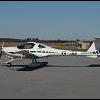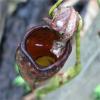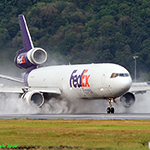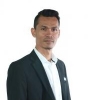-
Content Count
2,091 -
Joined
-
Last visited
-
Days Won
1
Sandeep G last won the day on August 14 2009
Sandeep G had the most liked content!
Community Reputation
1 NeutralAbout Sandeep G

-
Rank

- Birthday 10/25/1983
Contact Methods
-
MSN
ssgodrei@iinet.net.au
-
Website URL
http://www.aeronimbus.com
Profile Information
-
Location
Kuala Lumpur
-
Interests
Aviation!<br />www.friendster.com/sandeep777
Recent Profile Visitors
The recent visitors block is disabled and is not being shown to other users.
-
Sepang Aerospace Engineering (SAE) wholly owned by Airbus. So tech stop for any parts/misc. maintenance issues on the ferry is valuable for keeping costs low on a delivery flight with many hops like this one.
-
Food for thought... Link: https://www.afr.com/companies/transport/will-john-mullen-s-emotional-intelligence-work-at-qantas-20240627-p5jp9p Will John Mullen’s emotional intelligence work at Qantas? The business veteran’s decency, toughness and persistence could make him one of the airline’s great chairmen. [Australian Financial Review, June 27, 2025 - 5:53pm] "Leadership lessons", by Aaron Patrick, Senior Correspondent Every board-level job John Mullen has held over the past two decades suggests that he will – if the gods don’t turn against him – be one of history’s great Qantas Airways chairmen. The 68-year-old Sydneysider and transport industry veteran recently joined the board, and will become chairman in coming months. John Mullen at the Chanticleer 50th anniversary lunch in Sydney on June 13. Oscar Colman Mullen’s top priority will be guiding his little-tested chief executive, Vanessa Hudson, through the challenge of restoring the reputation of a once-admired business that became a synonym for hubris. Throughout his career, Mullen has shown an unusual degree of integrity, courage and foresight. Being decent and intelligent doesn’t automatically make a good leader. But Mullen is tough and persistent too. To understand Mullen’s style, it is worth comparing him to his predecessors at Qantas and Telstra, where he was a director for 16 years. At the phone carrier, the chairman from 2009 to 2016, Catherine Livingstone, maintained the traditional separation within the organisation. She communicated through the CEO, and didn’t encourage staff to go around him, according to a person who knows her. Mullen was more pragmatic. A naturally friendly person, Mullen made himself available to Telstra managers without undermining the authority of Andy Penn, the chief executive from 2015 to 2022. Outgoing Qantas chairman Richard Goyder. AFL Photos At Qantas, a similar dynamic may play out. Chairman Richard Goyder, 64, was the stoic defender of previous chief executive Alan Joyce, who took the airline to financial greatness – and enriched himself – at the expense of its reputation. Mullen is more likely to question his CEO, say those who know him. “Some criticised Goyder for being totally behind Alan and perhaps not challenging him,” says a banker who follows the company. “I think John will be much more engaged and receptive and testing and challenging.” Fund manager Mark Landau, who controls about 5 per cent of Qantas through L1 Capital, echos what many have said about Mullen: he’s approachable and combines a corporate governance focus “with a clear focus on shareholder and stakeholder interests”. "Flying low" The biggest perceived problem at Qantas is the same one Mullen saw at Telstra: angry and resentful customers. Telstra’s reputation was so bad that, in 2007, technology consultant Mark Pesce wrote a column headlined “Why we all hate Telstra”. The problems persisted for years. Finally, at his last annual meeting, in October, Mullen claimed a partial victory. Complaints are down 70 per cent, he said, but not as much as he would like. Qantas’ poor reputation was reinforced this week when it fell seven slots to 24th in a ranking of global airlines. Its planes are old, frequent flyer seats sparse, and tickets expensive. Part of the solution is Project Sunrise, the acquisition of 12 Airbus A350-1000s which will fly direct to London and New York. The plan was proposed in 2017. Delivery was recently pushed back to 2026 because a regulator asked for a redesign. Mullen has experience of big, complex acquisitions. He knows why they fail. As executive chairman at Toll from 2017 to 2022, he watched as a company-wide financial reporting system simultaneously grew out of control and was fought by fiefdoms. Eventually Toll’s owner, Japan Post, gave up and broke up the company. "Culture club" Corporate culture is hard to define, difficult to quantify and challenging to change. Whether or not you believe it improves financial returns, Mullen has shown it is important to him. When he ran freight group Asciano from 2011 to 2016, hiring and promoting women in the male-dominated industry was a priority. It was hard. Employment on the wharves was often passed from father to son. Many male staff didn’t believe women were suitable for the work, including operating cranes. Mullen fired the most egregious opponents. A passive resistance persisted, and he overwhelmed it by docking the pay of mid-ranking men. “You have got to be absolutely relentless,” he said once. “When people say ‘we can’t do it because of this’, you have to sit down and work out how do we fix that.” In five years he doubled the number of Asciano’s women employees. Qantas was once a blokey business too, before Joyce arrived. While it is unclear if the airline requires a shift from the Joyce era, breaking up cultures that favour certain groups, based on gender or other characteristics, must be good for any business. While Mullen promotes egalitarianism, he believes in paying good CEOs well too. Corporate leaders shouldn’t be punished when circumstances outside their control hit their companies, he has said. Even though shareholders will demand executive pay cuts when their share prices fall, Mullen believes this will be self-defeating. Great managers will quit and switch to private businesses, which Mullen sees becoming much tougher competitors – and attractive employers – because of their focus on long-term returns. Boards, he believes, have a responsibility to resist short-term pressures. With many fund managers reporting their returns on a monthly basis, CEOs sometimes focus more on their quarterly performances than well into the future. Mullen’s reputation is for making long-term decisions even if they can cause short-term pain. There is, of course, no guarantee that even if Mullen operates at his word, he can deliver a large, long-term increase in Qantas shares, which are barely up over the past five years. The future is unpredictable, and airlines have a remarkable talent for losing money. In the meantime, if you’re unhappy with Qantas, let the new chairman know. His LinkedIn profile, as of Thursday afternoon, was open to messages from anyone.
-

One dead as London-Singapore flight hit by turbulence
Sandeep G replied to flee's topic in General Aviation
Across the industry, a large number of complaints in the past about frequency of in-flight announcements, and subsequent disruption of passenger comfort/entertainment program. https://simpleflying.com/too-many-announcements-do-passengers-care-what-the-pilot-is-called/ IFE screens on SQ do have "visual fasten seatbelt" on the A350/787 IFE systems for sure. Perhaps in time to come, the "fine print" of tickets will exclude the individual from compensation if discovered they did not have their seat belts fastened when the seat belt sign is indeed on... guess seats/belt mechanisms will need some sort of sensor like in cars. All depends on the cost-benefit analysis between Insurance payouts and Part 25 approval. -

One dead as London-Singapore flight hit by turbulence
Sandeep G replied to flee's topic in General Aviation
1. Situational Awareness - Perceive, Comprehend, Project. Great opportunity for a refresher on terms. https://skybrary.aero/articles/clear-air-turbulence-cat#:~:text=Jet Stream.&text=Although not all jet streams,the wind shear is greatest. CAT is being thrown around quite freely by pundits and commentators in the media a lot. Whilst radars do not necessarily detect the presence of CAT, meteorological knowledge is important - e.g. Rules of thumb like, avoid the "cold-side" of a Jet-stream... Avoid Convective build-ups (development stage of CB cloud) in the ITCZ... Be aware of the combination effect of land-mass/daytime max temperatures and moisture (e.g. river delta on a peninsula).... Be aware of season (e.g. NE Monsoon/SW Monsoon) - These typically can be read off a Significant Weather chart forecast for a flight plan, and assessed for "risk", and nowadays, SATCOM wi-fi connectivity with Company iPads could deliver secondary information (albeit slightly delayed) about weather in the area and even PIREPs from other aircraft... and finally combine all this with weather radar technique with knowledge of its capabilities and limitations - the primary means for effecting safe navigation through/around weather. 2. Application of Knowledge/ Threat & Error Management If you can't avoid, then "trapping" and "mitigating" against the threat become important. https://aerospace.honeywell.com/content/dam/aerobt/en/documents/landing-pages/white-papers/C61-1471-000-000-IntuVue-wp.pdf Page 8, figure 7 shows this modern multi-scan weather radar that within 40NM range (~5 mins flight time) (in some cases, 60NM/~7.5 min flight time) magenta returns can display areas of turbulence - particularly associated with CB/Convective weather development. The Auto-mode of this particular weather radar, with a flight-plan programmed, would display moisture returns (green/yellow/red) up to 320NM away (~40 mins away) from surface to FL600, and even filters the weather using thatched/non-thatched returns for greater Pilot SA. Be aware, that returns behind larger cells/ or ice-crystals, may NOT necessarily display, and thus in areas of forecast "embedded" CBs, extra judicious caution/management may be required. 3. Communication Communication with ATC; maintaining a listening watch to what other aircraft in the area ahead of you are doing. Possible to also monitor TCAS returns if within range as a means of understanding the weather avoidance preceding aircraft are taking. Reliability of ATC can be an issue - VHF reception? CPDLC? HF? If comms/approval for deviation/re-route not possible - application of "Contingency Procedures" such as laterally deviating and climbing/descending 300ft when >5NM/10NM (airspace specific), declaring PAN-PAN for weather avoidance and broadcasting to ATC/121.5 simultaneously.. Alerting Cabin Crew with as much notice as possible (minimum 5 mins when navigating in/around CB cells/convective weather), especially with regard to cabin-state - e.g. lull period? Delay/advance Service? crew-rest? Seat-belt signs/suspension of service via intercom with Cabin Manager and PA are means of accomplishing this. .... Specifically to this unfortunate case, the Annex 13 investigation and final report of this accident will be interesting. It appears that Thailand (State of Occurrence[?*]) has delegated the investigation to Singapore (State of Operator/State of Registry), as allowed under ICAO Annex 13. Have a read of this, if interested: https://sso.agc.gov.sg/SL/ANA1966-OR7/Historical/20210102?DocDate=20231228&ValidDate=20210102&ViewType=Pdf&_=20240122181212. [?*] Note:The "delegation" is interesting because, technically, the occurrence was in Yangon FIR; but the issues involved with that given the current "at-war" state of Myanmar complicates things... In any case, multiple agencies such as US NTSB (State of Design/Manufacture), UK AAIB, Australian ATSB and even Malaysian AAIB, can be parties to the investigation, the latter three owing to having citizens on board that died/suffered serious injuries, are entitled to request to participate with their own expert(s). Remembering, Annex 13 is not to apportion blame, but to determine probable cause and contributing factors, as well as examine the resilience of existing technology, SOPs and event-handling, with valuable safety lessons from any "gaps" found, that ought be "plugged" to deliver an additional level of safety in the future. Speculation, whilst "exciting" and "thought-provoking", is often overwhelmingly filled with noise and, unfortunately subjective contribution. Great reminder to all to comfortably wear one's seat belt whenever seated, and try to hold on to something (eg seat corner/handle brace, whenever walking/moving about the cabin. -
Tbh - the layout is ok - but the second satellite plans in their original form would make it a bit messy.. but if they were to redesign the sections between the two satellite terminals and integrate them (including "rejigging" the standalone Aerotrain Maintenance Building), they could make it work with even more gates on the Southern side (narrowbodies/MARS). The current airside access way and roundabout may need to be sunk a little further to permit building/apron operations atop - but doable. Only consideration/issue is where the existing fuel line infrastructure resides in the sub-soil. And ofcourse, unlike T2, they should not stinge on the Rigid Pavement for aircraft stands/aprons.
-

Saving Airasia Group and Airasia X: Covid-19 Recovery Thread
Sandeep G replied to flee's topic in General Aviation
Seems VVA is returning to AirAsiaX... https://www.thestar.com.my/business/business-news/2023/12/06/aax-streamlines-fleet -
The belly also has a stunning logo, with title.
-
Good to see the fleet developing. I believe there might also be some "Azul" A350s up for grabs from Brazil.
-
Would perhaps be a little too simplistic of my assuming - but given that the current Aerotrains operate on a wheel based (not railed system) platform, would a temporary use of these devices (modified perhaps by way of ensuring the platforms may accommodate the train rather than vice-versa) to temporarily run on one (or both) of the aerotrain lines to keep the service running conveniently.. but at least in my thoughts, it seems more plausible/realistic having such a service ready perhaps even by year end as oppose to the end-2024 projections for the new line - and would be some degree of respite for the airport and passenger/customer feel alike.
-
Just flew out of T2... apart from the departure hall and arrival hall... the Airside duty-free and amenity level is still very much the same as before - ZERO CHANGE - probably why they opening 18 months "ahead of schedule" as I recall the ENTIRE terminal was supposed to be refreshed in phases originally... Lots of hoardings around the shops with some outlet refreshing for sure. Ceiling panels in some areas changed, others not. Carpet change in some areas, mainly not. All lounges are the same as pre-pandemic... The McDonalds and Food-Court on upper level airside area identical. The F52-F60 Pier was IDENTICAL to before the closure.. all gate lounges have the same tired chairs, slightly damp smell and poor natural lighting along the travellators. Notably, F60 (CIP/VIP gate) has a lick of paint and fresh new carpeting plus some pot plants along the connecting pier. I did notice at the walkway towards F31-F47, there is a new structure built - not sure if this is ahead of possible demolition of the F42-F47 (& similarly E Finger Pier) gates to permit a double parallel taxiway, which is currently missing from T2 side.
-
Just tried the new J class and Y class seats to and fro BKI respectively. I know there are comments here that don't favour - but tbh - I really found them quite good. More space and better comfort in the lower back area. Direct comparison with EY Seats on SIN-KUL vv sectors. Old seats are crammed and feel claustrophobic. New seats in EY could still definitely have used an adjustable head rest though - that I will agree. I'm 6ft 2 btw.
-
This is why although our passport is certified as ePassport - we can't use the e-Gates in Australia - because they need to have the Surname/Family Name separate from the First/Given Names. This is the format that most other countries use - and actually the individuals name on the Biodata page is listed under Family Name/Surname: Kennedy Given Names: John Fitzgerald In Malaysian context; simply - Name: John Fitzgerald Kennedy So all the time ETA and e-Passport gates in other countries kelang kabut and we can't use despite the convenience.
-
https://simpleflying.com/qatar-airways-brisbane-australia/ for context..
-
Perhaps in the case of BNE, new collaboration with a partner like QR who might shift their metal DOH-KUL-BNE vv instead.. rumour was heard that this capacity shift and augmentation might occur.. currently QR operates 1* daily to BNE from DOH.



